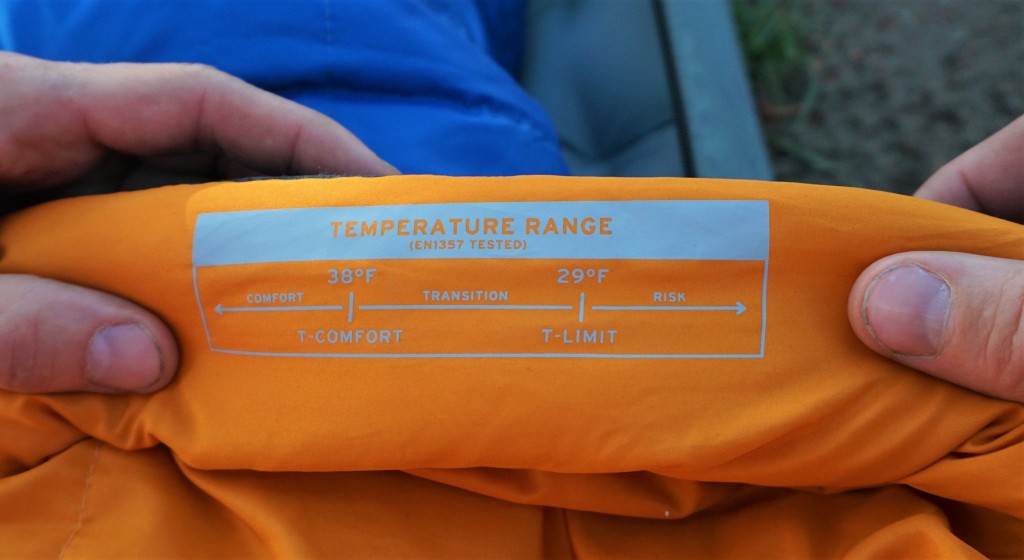REI Co-op Trail Pod 30 Review
Our Verdict
Our Analysis and Test Results
REI brand products have a reputation for offering consistent performance at an awesome price. The Igneo 25 and Trail Pod 30 sleeping bags certainly lived up to this reputation. The Igneo offers the performance of a premium down bag, but it won't cost you an arm and a leg. The synthetic Trail Pod, meanwhile, doesn't give you premium performance, but it's perhaps the best sleeping bag deal out there.
Performance Comparison
Warmth
The Trail Pod features an adequate draft tube and hood closure to seal your heat inside. In the industry-standard EN test, it receives a 29°F lower limit temperature rating. In the field, our testers thought this rating felt accurate compared to other EN-tested bags.
To sleep comfortably at a lower limit rating, however, most people will need a great sleeping pad, extra insulating layers, and residual heat from a tent buddy. The average backpacker will likely be happier in this and similarly rated bags closer to the EN comfort rating — in the Trail Pod's case: 38F. With this level of warmth, it's well suited for all but the coldest 3-season conditions.
Weight
One of the biggest drawbacks of the cheaper sleeping bags is heavier materials. A size long Trail Pod tipped our scale at 3.04 pounds. This weight is more than double that of a premium lightweight bag. But to enjoy that weight savings you have to spend at least a hundred dollars more. Compared to several similarly priced bags, the Trail Pod is lightest. Based on these comparisons, we believe this bag offers a respectable warmth-to-weight ratio relative to its price.
Comfort
Although this is a traditional mummy bag, the taper from the head to foot of the bag is fairly mild. Its 64-inch shoulder girth is also among the widest of the budget sleeping bags. Together these qualities result in a bag that feels particularly spacious. The polyester taffeta fabric lining on the inside of the bag is also a favorite of our testers because it feels softer than the glossy nylon found on many more expensive bags.
Packed Size
Another drawback of affordable sleeping bags is that the insulation is usually bulkier and more difficult to compress. This situation is true for the Trail Pod's polyester batting. Using our own compression sack, we were able to pack it down to 12.1 liters in volume. This figure is nearly double the size of the smallest bag available for under $200. It's a liter or more smaller, however, than several other budget bags in the sub-$100 range.
Keep in mind that this measured packed size is not attainable with the simple the drawstring stuff sack included with the Trail Pod. That sack is relatively heavy at 3.2 ounces and achieves a packed size that's roughly 20% larger than the minimum we observed with a good compression sack. So if you plan to backpack regularly, we recommend spending an extra twenty bones on a lighter, more effective, after-market compression sack.
Versatility
In terms of versatility, this bag's biggest advantage is its synthetic insulation. When down feathers get wet, the clusters often clump. The Trail Pod's polyester fibers, in contrast, don't clump and are instead able to retain a considerable percentage of their insulative power even when soaked.
The versatility advantage of synthetic insulation is not very useful for distinguishing the Trail Pod from other budget bags—most budget bags use synthetic insulation because it's cheap and easy to work with. Compared to these direct competitors, the Trail Pod offers about average versatility. Its ¾-length zipper is useful at venting excess heat while its hood seals in heat on colder nights. Unfortunately, it lacks any additional features, like a neck baffle or accessory vents, to extend its usable temperature range and enhance the overall versatility.
Features and Design
The Trail Pod is a spartan budget bag. It doesn't come with a stash pocket or functional compression sack. The thicker fabric next to its zipper, however, is fairly effective at preventing snags. We also found the hood closure to be comfortable and effective. We wish it used separate spring clamps for each of the two drawstrings so that it would be easier to adjust in the dark. Overall, the simple construction and barebones features combine to achieve the design goal of a functional sleeping bag that's extremely affordable.
Value
The Trail Pod is one of the most affordable backpacking sleeping bags that we've tried. Although it doesn't provide outstanding performance, it is a legit backpacking sleeping bag. And considering its price, we think it's an exceptional value. This value can even be enhanced if you're able to use one of the '20% off a single item' coupons that REI regularly offers their members, and don't forget you'll rack up dividends for it as well.
Conclusion
Our favorite backpacking sleeping bag is the Western Mountaineering MegaLite. It weighs a pound and half less than the Trail Pod, packs 40% smaller, and supplies superior comfort. To enjoy these benefits, however, you have to fork over nearly five times as much money. The Trail Pod may not be the best sleeping bag, but it might be the best deal. For around under a hundred bucks you get a real backpacking sleeping bag. Sure, you'll have to carry a little more weight, and your pack won't be quite as small, but after a strenuous day backpacking, you'll likely sleep just as well.









